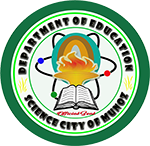By: Ann Christian A. Francisco
Whose responsibility is learning? The teachers? The students? The parents? The school? The community? These are questions that haunt the stakeholders of education and if you ask any of them, they will most likely point their fingers at other stakeholders. In reality, learning is everybody’s responsibility- in different forms and in different degrees.
For a start, teachers are responsible for the student’s learning. They have to prepare and deliver their lessons, design assessments to measure student’s learning, give regular feedbacks to their students, conduct conferences with the parents and other teachers in order to address issues in the classroom and in their teaching practice, monitor the progress of the students, assign grades based on the students’ achievement among others. Being teachers, their duties and responsibilities are not confined in the four walls of the classroom. At times, they also conduct home visits in order to talk with the parents of delinquent or failing students. In school, they act as parents or counselors when they give pieces of advice to their learners, when they become absorbers of the emotional, mental and even physical burdens of their students, and when they encourage and support their students in reaching their dreams in life. At a personal and individual level, teachers have the responsibility to attend seminars, trainings, conferences and even graduate school so they can be updated with the latest trends in education and become better practitioners.As role models and as embodiments of good manners and right conduct, teachers also teach and enable students to become better persons and better members of the society.
Supporting and serving as the skeletons of the teachers is the school administration. Teachers cannot operate and deliver their lessons well without the leadership of the principal and the provision of what the school administration. The principal evaluates the teachers under her or him, analyzes their training needs, proposes trainings for the improvement of his or her teachers and opens avenues for them to improve in their practice. In undertaking his or her duties, proper manner of communication should always be observed. This way, the principal earns the trust of his or her subordinates and maintains an air of professionalism in the workplace. Backing up the principal are the other administrative officers of the school. Together, they work to provide the material needs of the teachers and the students. They are responsible in requesting for budget for infrastructure jobs in the school. They are also responsible for maintaining safety and orderliness in the school compound. The setting of the classroom, with the properly arranged chairs, blackboard and sufficient teaching-learning materials, is their responsibility. Teachers and students have to be in comfortable chairs, well-ventilated and clean classroom, and functioning equipment.
The partner and complement of teachers in the teaching-learning process are the students. Students are responsible for their own learning. They have the choice and at the same time the responsibility to reciprocate the efforts of the teachers by studying hard, listening to their teachers, accomplishing their required projects, passing and even excelling in their examinations, keeping the room clean and tidy, among others. Most students blame the teachers for their low or failing grades, accusing them of not teaching well or not doing their teaching duties. However, they should also look at the other side of the coin, of themselves. They should reflect once in a while and ask themselves whether they are doing their part as students or they are putting all the burden on the shoulders of their teachers.
Finally, the parents and the community have their respective responsibilities. Parents provide nutritious foods to their children so they can absorb well the lessons in school, guide and encourage them to be good students, provide their school needs, attend parent-teachers’ conferences or meetings, and monitor the academic progress of their sons and daughters. In partnering with the teachers and the school, parents lessen the burden of the school. The neighbors of the school like the supermarket, the canteen, and the houses are opportunities for the students to demonstrate their learning. For example, they can apply Mathematical abilities when they try to sum up the value of their purchases. Further, they can also apply their communicative prowess when they haggle respectfully with the vendors, talk to the parents of their classmates or just smile at those whom they meet on the streets. More importantly, the community is the bigger world, second to the school, where students are supposed to grow and develop so the community members have also to make sure that they provide “rich soil where plants (the students) can thrive.”
All the people mentioned work hand in hand to enable and optimize learning. No matter how small or big the responsibility is, if it is not done and not done properly, it significantly impacts the process. The mentioned responsibilities are operated and carried out because of love and commitment. Without these two, the product will be mediocre. Consequently, the nation will stay as it is, without progress.
